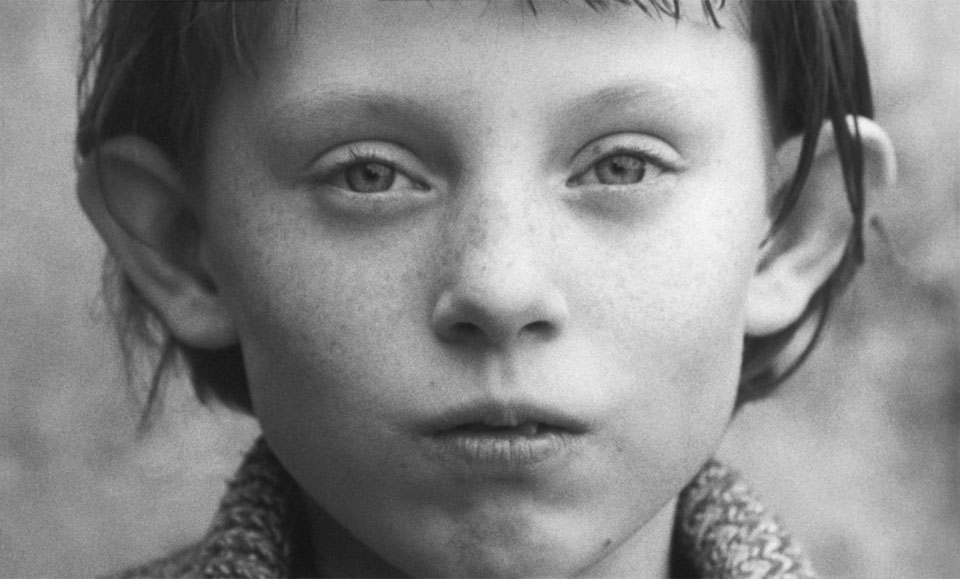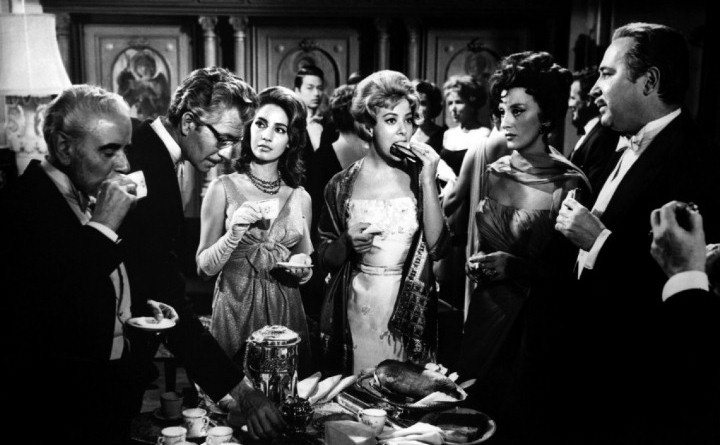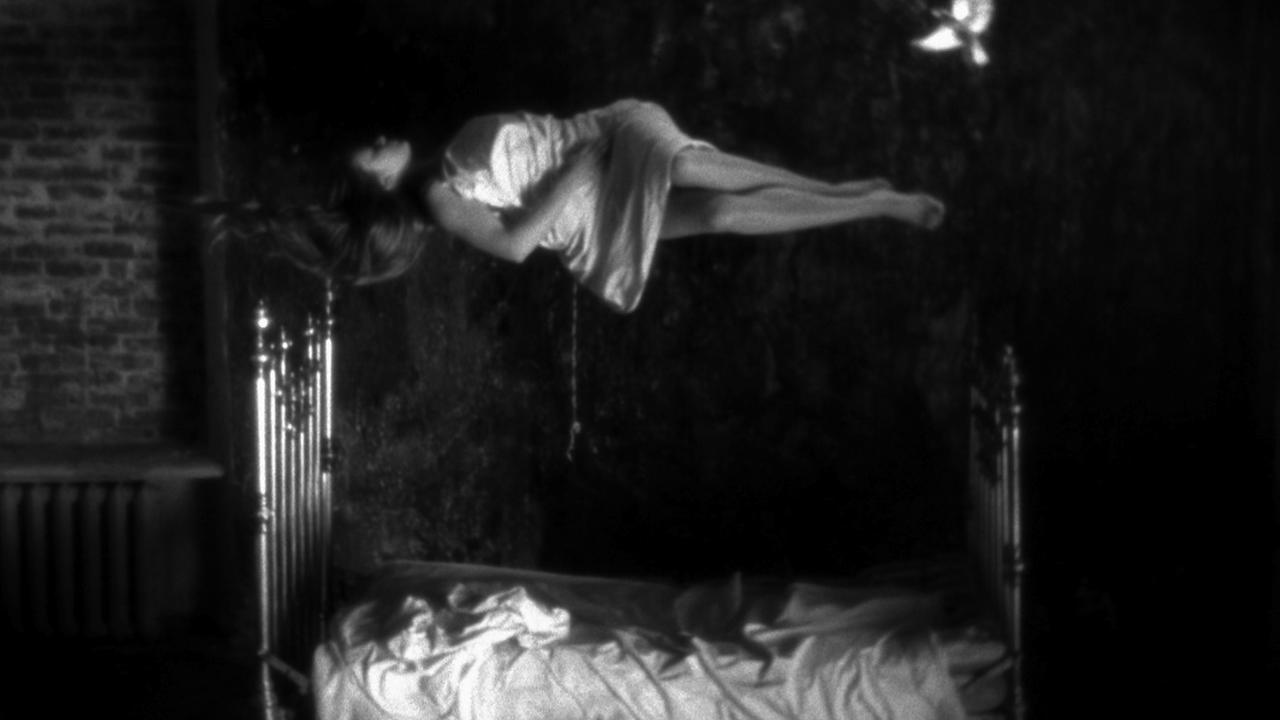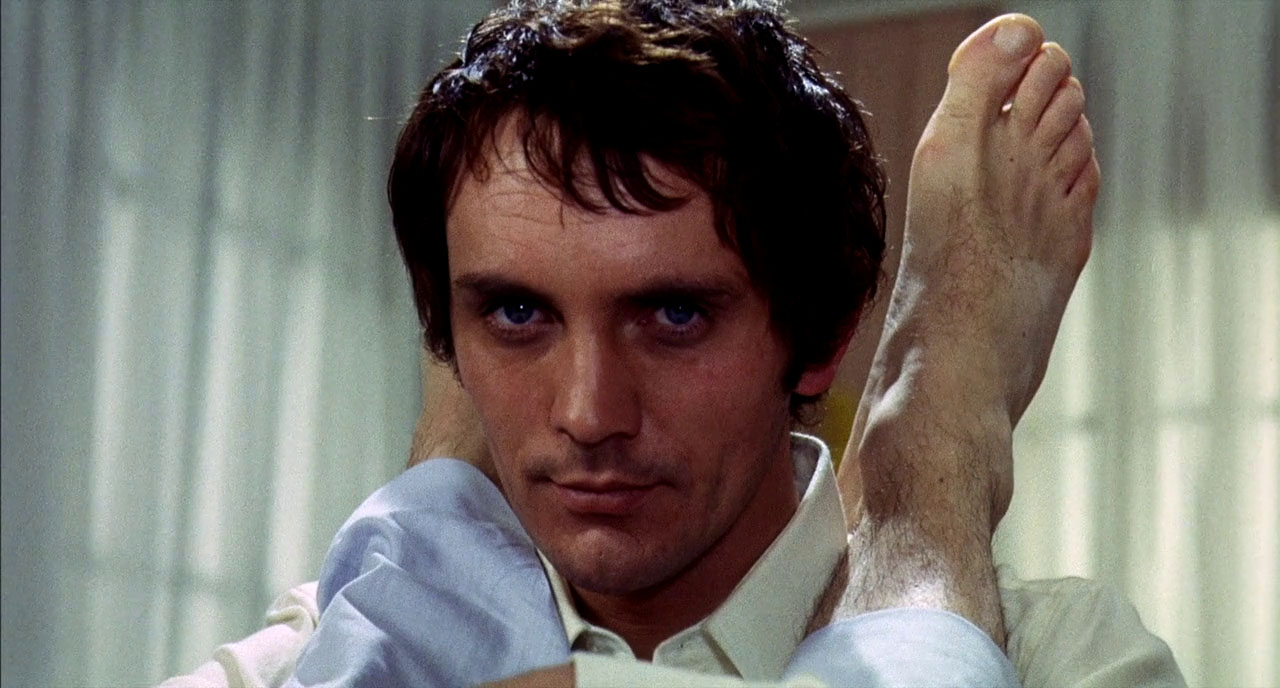5. Satantango (1994)

Eradicating the man-made geographical and cultural limits, Béla Tarr’s cinema puts into its detailed focus various ecumenical terrors. Projected on the boundless screen of time, a pessimistic philosophical approach on humanity’s diachronic maladies, doomed fate, and inherent moral vice is torturously exposed to the cerebral eyes of the brave and predictive minds.
Tarr’s apocalyptic film “Satantango” depicts the bleak life of a sharecroppers’ group that fruitlessly survives in an abominably decayed and hostile Hungarian flatland. The story’s structure follows the basic kinesiology of tango: six steps forwards, and then six steps backwards.
Wigwagging between stable narrative points, Tarr presents the symbolic happenings in the chronical limits of just few days, through many different lenses, until a deformed sense of time highlights the disintegrated character of this global cinematic land.
A restless naturalistic ambience and an intensively pessimistic warning scream endlessly throughout the seven and a half hours of “Satantango.” In its minimalistic script, meaningfully slow rhythm, and purposefully terrifying effect, Tarr’s most seminal work expostulates to the thin entertaining abilities of cinema, and virtually creates a cosmic mosaic of downside.
4. The Exterminating Angel (1962)

Signifying the surrealist movement in the seventh art, Luis Buñuel poignantly elaborates on class-conscious matters, and moreover, delves into numerous psychological aspects and behaviorisms of human nature.
The compositional character of his artwork is obvious in many of his unforgettable films, like the witty “The Discreet Charm of the Bourgeoisie” and the complex intellectual reality of “Belle de Jour.” His lesser-known film, “The Exterminating Angel,” however, is a typical “Buñuelian” piece, full of meaning and artistic discernment.
The bizarre and unconsciously self-concealed reality of the film refers to the complex-ridden upper-class of Franco’s status. Gathered at a chateau due to a reception’s occasion, a group of bourgeois guests find themselves locked behind self-made comprehensive binds, as they spend plenty of time together and interact with each other.
Mirroring the troublesome mentality that springs from the upper-class stereotypes and oppressing behaviors in this surreal setting, Buñuel synthesizes a nightmarish experience that entails typical “Buñuelian” surrealist motifs and visuals.
Essentially, more than exposing the deeper human flaws and timeless troubles of a seemingly fortunate social class, the Spanish director creates a masterful artistic entity of brilliant syllogisms, artistic complexity, and rebellious mood.
3. Persona (1966)

Considered as one of the most complex films in cinema history, Ingmar Bergman’s “Persona” fulfills both a painful and deeply satisfying consideration of cinema’s functions. Disuniting the technical characteristics that synthesize a motion picture’s optical foundation and the ideas emerging behind the colors, shadows and sounds, Bergman intends to focus on the holy duty of the seventh art, as he methodically composes a cinematic symphony by putting back together all of the fundamental pieces of a flawless film.
An actress called Elisabet drifts into an esoteric world of silence, after embodying a possibly stigmatizing role. A young nurse named Alma is hired, mostly with the scope of communicating with Elisabet on a personal level, until she trusts her caring nurse, and by extension, herself.
Gradually, the coexistence of the two women reveals that Alma, a name that means “soul” in Spanish, is Elisabet’s alter ego, and thus their relationship’s complexity reflects on various significant aspects of Elisabet’s psychology and character.
There’s a thin transparent surface in the middle of the film’s conceptual structure. On either side of this surface, reality, and allegory attempt to touch their hands. Bergman, even from the beginning of the film, made clear that what you see in a motion picture’s visuals is fiction. What you actually experience, though, is the deepest layer of a substantial reality and the catholic personal character of an entity.
2. The Mirror (1974)

What does cinema represent more substantially than the strong inner connection with the past? Which emotion is more closely related to the seventh art than nostalgia? Andrei Tarkovsky’s “Zerkalo” comprises a hymn for life; a hymn that praises life’s sacred experiences, values and figures, until it reveals completely the entirety of a deep sentimental world.
Right before a man’s demise, his lifetime is projected in front of his eyes, not with the form of a linearly evolving story, from his years of childhood until the present, but through a chaotic collage of scattered recollections that signified his existence and are now kept in the chest of his memory, placed tenderly like the most valuable treasures. His figure is never exposed on screen, since Tarkovsky’s intention is to prove that what you own right before your end, are the pictures that you hold in your heart; what you really are, are your memories.
Narratively unconnected foregone scenes manage to be archived in their original sequence through Tarkovsky’s brilliant use of color. Some scenes are in black-and-white, some are faded, and some are colorful. The film’s navigation within the fluid entity of time, instead of just capturing ideas and senses, recreates the steady and insoluble thread of a man’s life.
At the end, rather than feeling lost in a billowy sea of memories, if one pays attention to the film’s keys, a strong mental awakening and emotional involvement will occupy their mind.
1. Teorema (1968)

Pier Paolo Pasolini, one of the most debated figures of the seventh art due to his controversial political ideas, sexuality, provocative cinema, and mysterious death, had many contemplations and cultural gems to leave behind. His numerically limited filmography is absolutely complete in relation to its apt social criticism, political placement, religious introspections, sexual boldness, and sentimentalism.
His quite unmentioned 1968 “Teorema,” in its unapproachable quintessence and masterfully hidden polymorphic content, entails and practically amalgamates all of Pasolini’s values, fears, aspirations, and aversions. Disguising the total entity of Pasolini’s society under the costume of a middle-class family, he allows plenty of critical ideas to come to the surface.
The depicted family accepts a symbolic visit of a man who, by pursuing sexual contact with all of the family members, manages to reveal all the maladies that strike their microcosm: alienation, self-denial, egotism, insecurity, lack of mental pleasures, and many more. His unanticipated departure becomes the reason behind the sudden must-have externalization of all the family members.
The film’s revolution lies in its script symbology. If one tries to follow the story and comprehend its characters, as if walking on a straight paved road that culminates in an obvious conceptual end, then the battle is lost and this filmic experience is nothing more than a confusing stroll within a maze’s intersecting trails. Attempting to synthesize this surreal puzzle thought, “Teorema” delicately unfolds, on a canvas of beauty and spiritual magic, revealing its valuable secrets.